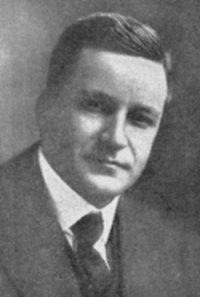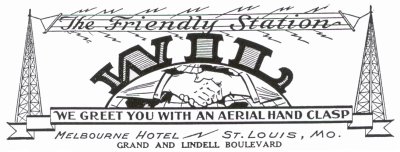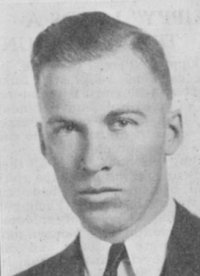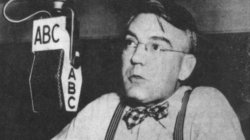Radio Articles
Harlan Eugene Read, Engineer of “Katy News Express” Is Man of Letters
by Nancy Frazer
Giving a complete picture of the news events of the world as it rotates and wabbles (sic) upon its axis to move uncertainly on each day is the objective of Harlan Eugene Read, news commentator, heard on KMOX nightly at 9:45 p.m. Ambitious objective it is, but done in fifteen minutes, it is an incomparable achievement.
Not content with merely telling the events that transpire each day, Mr. Read sums them up with happenings that have gone before and relates the world wide developments as to their effect upon this country and upon each other.

Mr. Read (and we can’t help but wonder if there is any significance in the name Read and reading) is well equipped to analyze the news and present it, as he is a lecturer of note, a novelist, teacher, and has long been connected with newspaper work. He knows news and he knows the significance of happenings in both this country and in Europe because of his widely traveled experience and background.
It is not a mere fifteen minute program of newspaper reading which it would seem to be as his voice comes out easily over the air each night, but one that involved eight hours daily of concentration and study. He reads the newspapers throughout the country and gleans from them all of the information which he deems of an instructive and interesting nature to his listeners. He essays to present a balanced account of the news so that it will be interesting, helpful and entertaining.
Although Mr. Read, who was once the author and participator in a comic skit on KMOX known as “Mike and Mary,” gossipers with a Democratic leaning, is a Democrat himself (an out and out one he says), he presents his news without any partisan leaning. He says that the only complaints that he has had have come from three Democrats who claimed that he was Republican in his news giving, so he has attained his aim.
It is difficult to maintain a balance throughout this period of high tension but Mr. Read leaves out his own leanings on the subject and gives the news merely as he sees it, whether it be of one party or the other.
Radio is not a new field for this commentator for he was the first person to attempt to broadcast lessons over the air from a station in Peoria, Illinois some ten years ago. He was at that time owner of business colleges throughout this section, and he presented lessons in typing, spelling and bookkeeping in a light, comprehensive way over the air. He was a pointer in that usage of radio.
His comments upon radio and the future as one who has his finger so constantly upon the trend of events and developments are most enthusiastic for he foresees radio as the paramount means of communication of education and entertainment in the years that are to come.
“You can present any form of material in an interesting talking program,” says Mr. Read. “It but needs to have a lightness of touch, interjected with plenty of humor to make it comprehensive and entertaining. I try to make all of my programs with the understanding and interest of every person.
“Since I am dealing with the two types of persons; those who read the news avidly and look to me for interpretation, and those who are too busy to read the papers and expect me to give the trend of events in a nutshell, I try to make it lightly interesting.”
Mr. Read, who is a graduate of Oxford University in England, came to St. Louis from Illinois some twenty years ago and has carried on his literary work from here. He is the author of the novel “Thurman Lucas” and numerous books of a business nature.
(Originally published in Radio and Entertainment, 9/10/1932)




